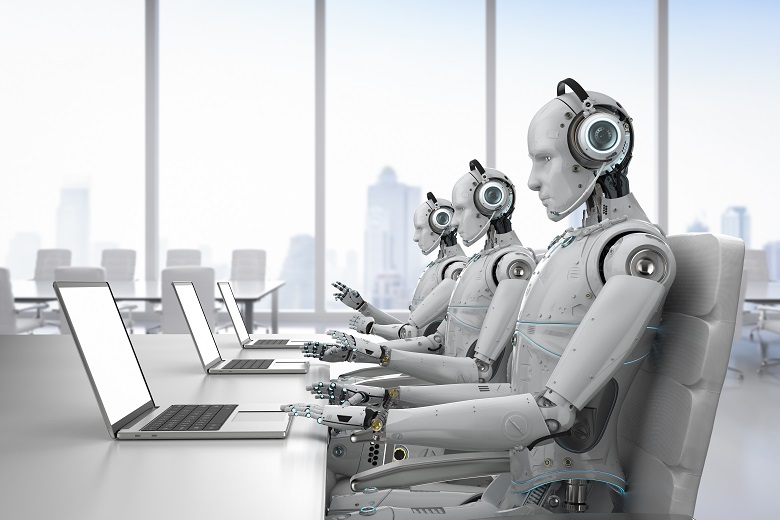
Tighter budgets, expanding workloads, declining workforces, increasing regulatory requirements, rising data security concerns and growing citizen expectations are among the mounting challenges facing government executives every day, Rob Mills writes.
Dealing with these challenges involves maximising current and future workforces, as well as embracing technology and innovation to drive digital transformation. It also requires an effective digital strategy that encompasses compliance, cybersecurity and data flow within an agency and across clusters.
With mounting mandates to address these challenges, an increasing number of government agencies are exploring robotic process automation (RPA) as a way to deliver on their specific missions with more efficient processes, fewer mistakes, a more optimised workforce, better compliance and more satisfied citizens.
RPA makes government agencies’ business operations more agile and cost-effective by augmenting their human workforce with a “digital workforce.” Digital workers (or software robots) mimic the way humans perform the predictable, repetitive, tedious and error-prone portions of business processes.
Virtually any high volume, high touch, business rule-driven, repeatable process is a candidate. Think new hire onboarding, employee transfer processing, financial reconciliation, purchase requisitions, record management, invoice processing and asset management. Also, agency specific processes such as maintenance work scheduling and call centre-based case retrieval.
Since digital workers follow programmed rules, they automatically improve process quality, efficiency, consistency, accuracy and compliance. Just as importantly, they allow departments and agencies to focus on more high value probabilistic workloads, sometimes with fewer people and often with smaller budgets.
True value of RPA in government
The public sector is learning every day how to best apply RPA within their agencies. While some of the initial return on investment (ROI) focus is around cost savings, creating agency efficiencies and ensuring compliance; the true value is three-fold and is delivered across the entire department and, potentially, beyond.
First, there is value back to the agency itself in helping to drive down costs. All while still achieving its mission in a more efficient and effective manner and while under budget constraints, net-net returning human hours back to the agency.
Second, enabling a more citizen centric approach by increasing the overall quality of the services provided to citizens, coupled with improved consistency and overall faster delivery of those services.
Third, and in my opinion the most important, is enabling employees to take on more interesting cognitive related work by “freeing the robot” inside of them, in turn increasing their overall job satisfaction.
Free the human
Introducing digital workers into government has been faced with some trepidation. A lack of understanding has led many to think technology is going to replace them, or at a minimum reduce the workforce.
This couldn’t be further from the truth.
RPA isn’t going to get rid of employees … far from it. In fact, it’s going to help make them better, happier and more productive. Intelligent automation through a digital workforce lets people do what they do best – interact with other people.
The digital workforce frees up human employees’ time to focus on higher value tasks requiring emotional intelligence, reasoning, judgment and direct customer interaction, while autonomous multi-skilled digital workers tirelessly perform error-free rules based administrative transactions. This creates happier employees and a better environment to work in.
This collaborative relationship between human and digital workers enables the automation of more complex tasks, enabling agencies to automate a greater portion of the workload — and to reskill and redeploy more agency staff, often into the Centre of Excellence driving automation. This means business process experts drive the automation rather than IT.
Preparing the workforce for change
The key to success is having a solid change management process in place and involving employees early on in the journey, so they clearly understand the impact and intention of the automation project. The reasons must be clearly communicated so they’re easily understood to engage the business and get everyone on board.
In many cases, automation will take a portion of people’s roles or daily activity away, so know from the beginning how you’re going to reallocate their time. Upskilling will be required if employees are now being asked to do something different that wasn’t part for their previous job.
One thing is certain, by properly managing the unification of human and digital workforces from the very beginning, you’ll have a greater chance of success.
Rob Mills is VP ANZ for digital workforce solutions company Blue Prism
Comment below to have your say on this story.
If you have a news story or tip-off, get in touch at editorial@governmentnews.com.au.
Sign up to the Government News newsletter.
I expect that RPA when done well with a strategic approach will reduce human error in both Gov and any organisation to avoid breaches as was experienced last week by a major bank.